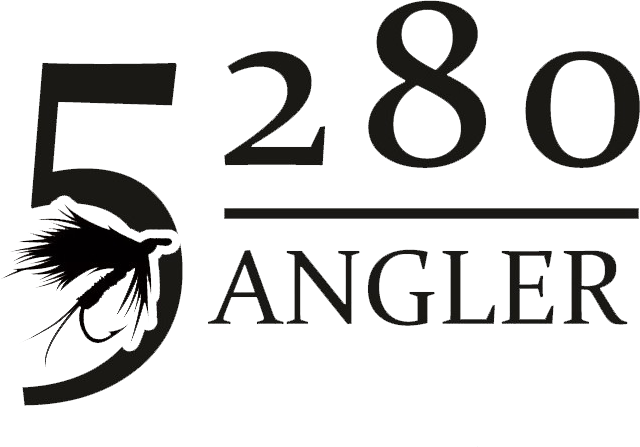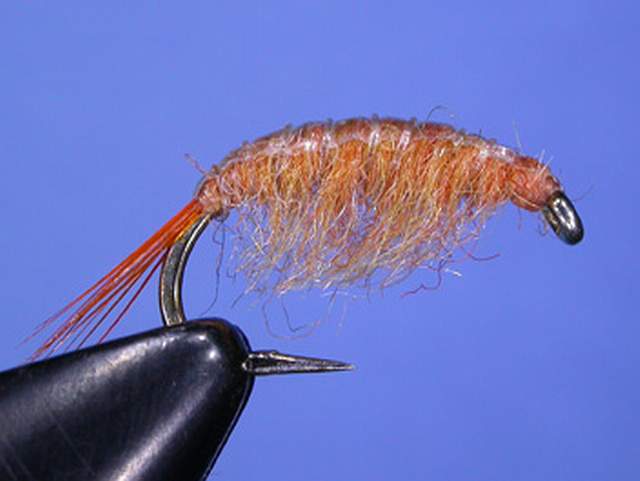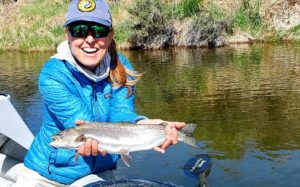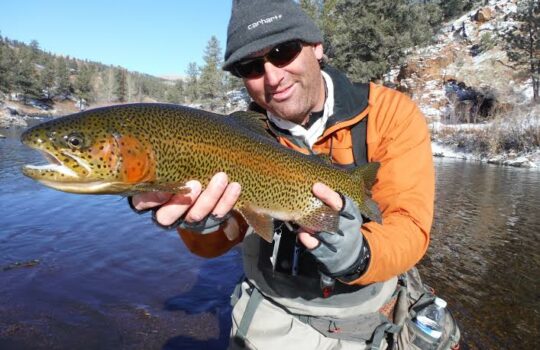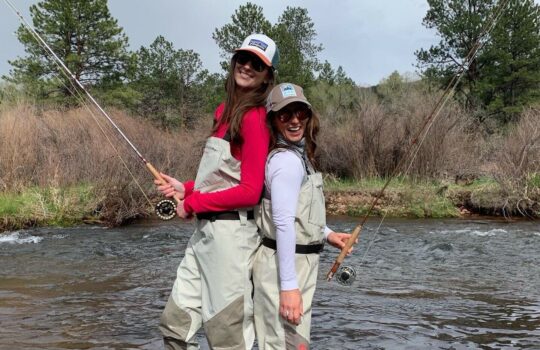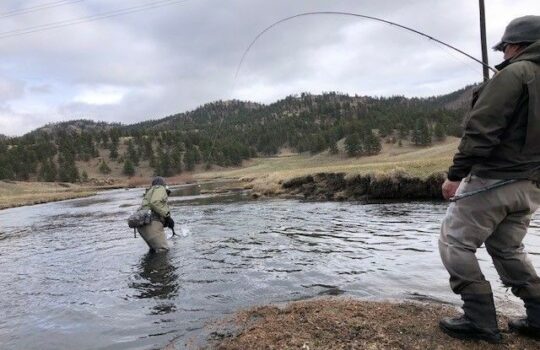Spring! Ahh… that wonderful time of the year when the snow starts to melt and the warmer temps start to bring the bugs out of their winter hibernation.
This is the time of year we start to see increased flow rates as the snowpack starts to come down off the mountains. So, what’s a fly fisherman to do when he/she goes to their favorite stream and the water is high and fast? The answer…scuds!
Scuds? I know there are some of you that don’t really know what a scud is. Let me enlighten you! Scuds are not insects at all, but small crustaceans, of the order Amphipoda, sometimes called freshwater shrimp (but not really a shrimp at all – just a distant cousin), and in some streams they are a primary food source for trout. They grow quickly and can survive in a variety of habitats, but they are most prolific and important to trout in slow, weedy spring creeks. Unlike most aquatic insects, they never “hatch” into a dry form.
Scuds are an extremely important trout food source in slow, weedy spring creeks, although the South Platte is not a Spring Creek it is very weedy in places. Scuds are crustaceans, so they don’t go through the same life-cycle complications as aquatic insects. They start out as small scuds, grow to be big scuds, and die. I think many anglers like that about them.
They are cold-water scavengers of dead plant and animal life, and they are extremely abundant in weedy spring creeks and many lakes. Their imitations make outstanding searching patterns: Any artificial fly pattern used when trout that aren’t feeding selectively on anything in particular. A searching pattern may be an attractor or an imitation of something specific that the fish might favor even though it’s not currently hatching, and work well fished dead drift or with a slow retrieve.
On most of our local streams such as the South Platte, and the Arkansas, scuds play an important part in our spring fishing endeavors. We all know how weedy the South Platte can be in places, well, those are prime locations for scuds which like to hide in the weed beds. During high water flows these little crustaceans are dislodged by the current and set adrift in the water column. Easy pickings…for a hungry spring trout.
Most live scud imitations are tied in olive, gray, brown or tan…olive and gray being the most common. Like their saltwater cousins the shrimp, when a freshwater scud dies it turns a shade of pink or orange which is why you will see a lot of scud patterns tied in this color variation.
In the spring an orange or pink scud makes a great searching pattern, especially during the spring spawning runs because the fish will often take an orange or pink scud as an egg pattern. A good combination to use in the spring would be an orange or pink scud as your point fly and perhaps a Bead Head Pheasant Tail as your dropper.
Your best bet to catch fish on scuds in lakes is to get your fly down to near the bottom. A weighted fly is the answer in deeper water. Retrieve very slowly. Folks have called scud fishing the most boring of all, since the retrieve should be about as slow as you can stand it. In water deeper than five feet, a sinking line is recommended.
For spring creeks and tailwaters, a floating line with a strike indicator is the way to go. Use a normal nymphing technique, but again, with a very slow retrieve. Your fly needs to be on the bottom of the stream bed.
Okay, that’s it for now. Good luck and Tight Lines!
Scud by Pat Dorsey
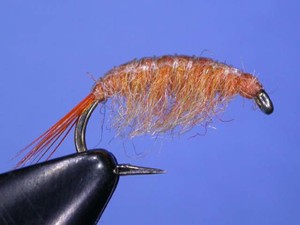
Hook: TMC 2457
Size: 10 ~ 18
Thread: Orange, Olive, Tan 6/0 Uni Thread
Tail: Orange, Olive, Tan Saddle Hackle
Rib: Monofilament
Scud Back: Clear, Orange, Olive, Tan Scud Back
Body: Orange, Olive, Tan Dubbing
